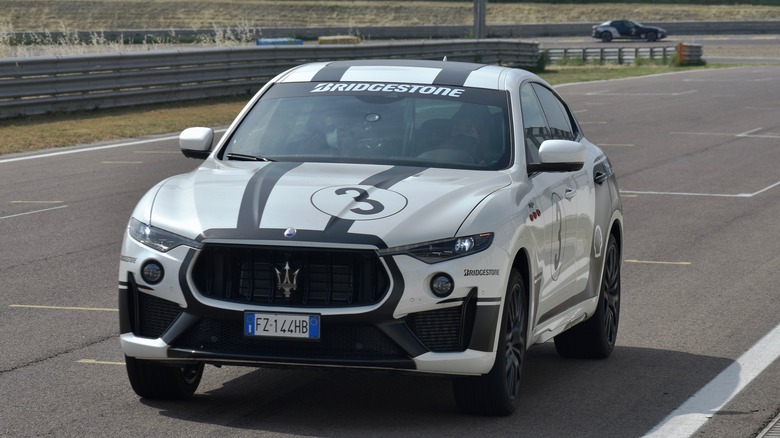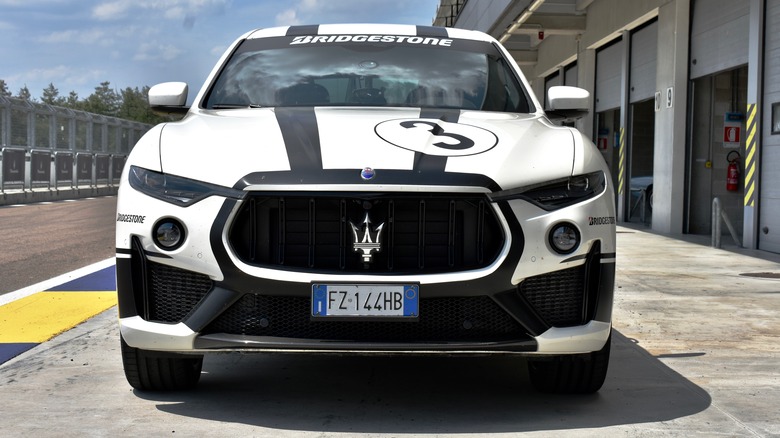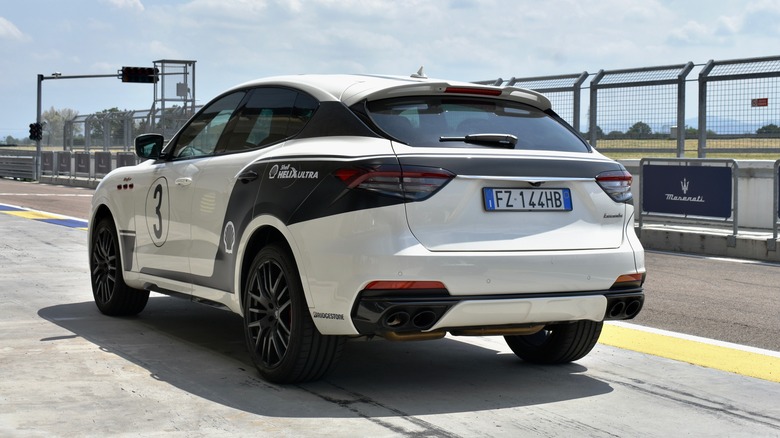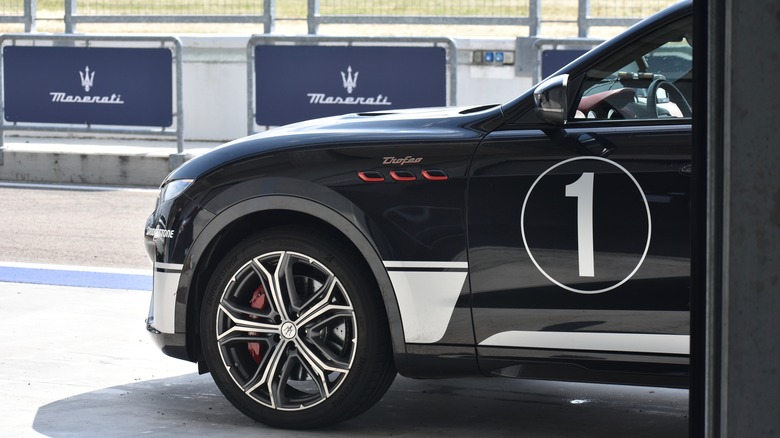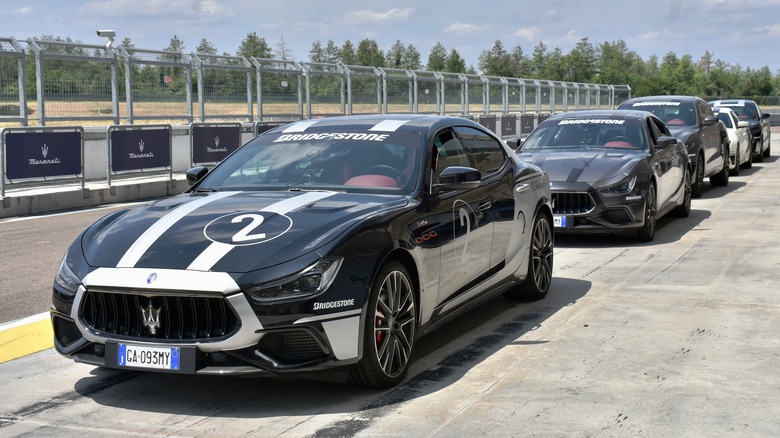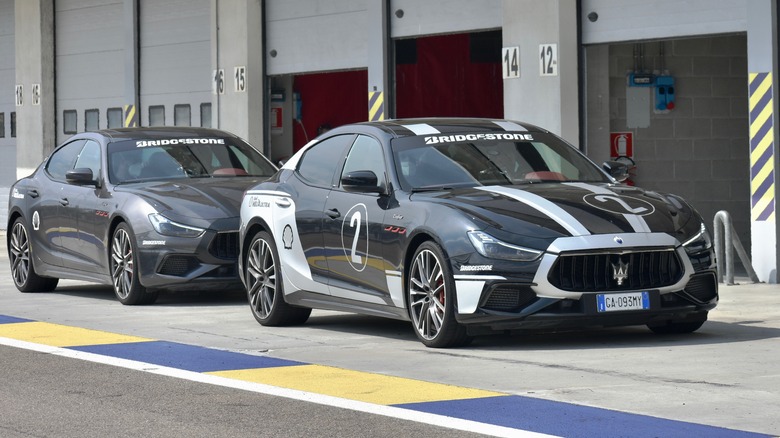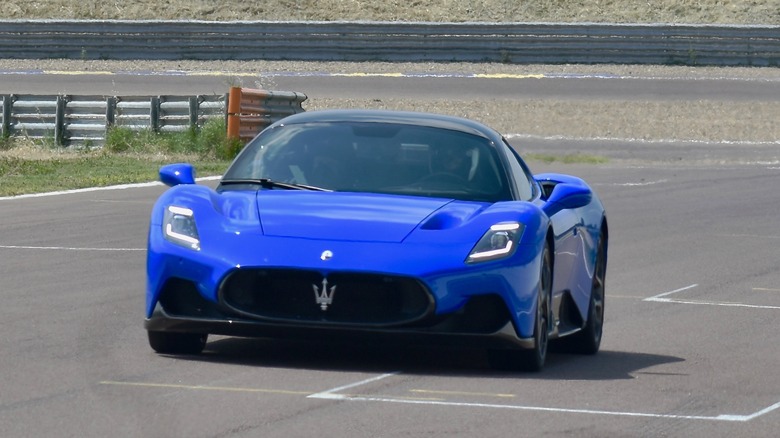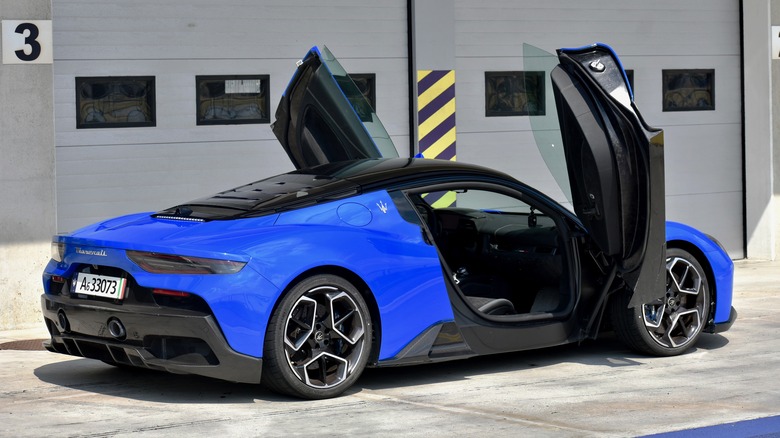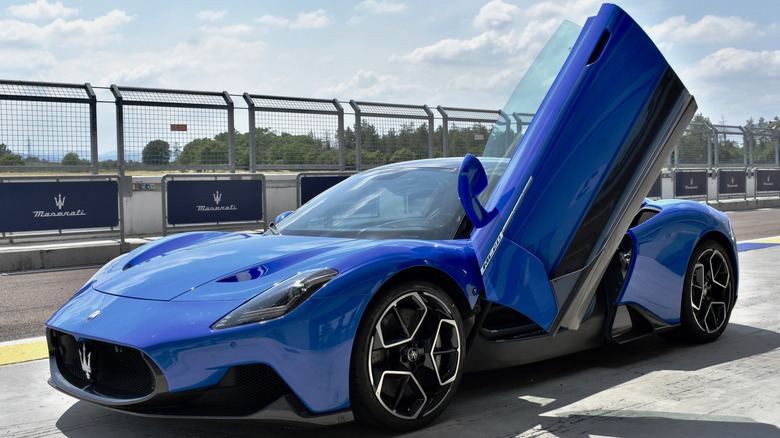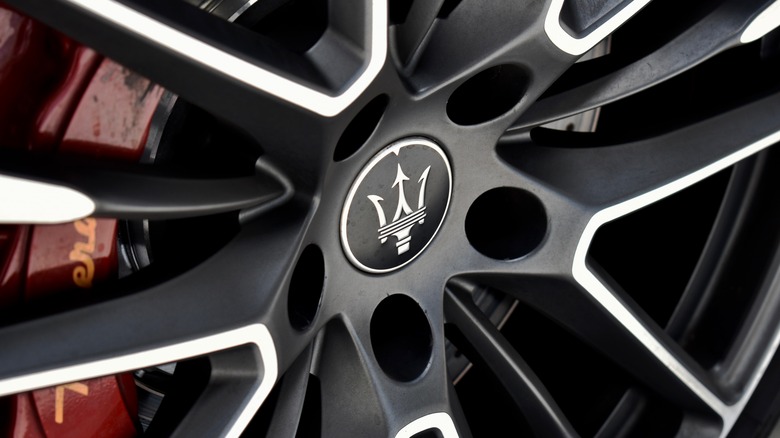This Six-Figure Maserati Track Day Was A Wake-Up Call For Performance Cars
Modern technology has gifted us performance cars in all shapes and sizes—all with impressive spec sheets. Today you can buy a sedan or SUV with power and acceleration once reserved for purebred supercars. But that doesn't mean they drive the same, a fact that can be difficult to quantify unless you have all three side by side.
Consider us lucky, then, to have recently had the opportunity to sample three performance cars, all from the same manufacturer, and all on the same track. The Maserati Levante Trofeo and Ghibli Trofeo are sportier versions of a luxury SUV and sedan, respectively, while the Maserati MC20 is a supercar designed from the outset to go fast.
The venue was the Autodromo di Modena, not far from Maserati's hometown of Modena, Italy. This proved to be a good location, because the track's compact 1.2-mile length and series of tight corners meant braking and handling balance would be more important than raw power. A steroidal engine wouldn't mask any chassis flaws, something we found out after just a couple of laps.
Putting the sport in Sport Utility Vehicle
We started in the Levante Trofeo. Launched for the 2017 model year, the Levante was Maserati's first SUV and thus immediately drew questions about whether it could live up to the brand's heritage.
After all, Maserati built its reputation in racing. Cars like the 250F and Tipo 60/61 "Birdcage" were as beautiful as they were successful in competition. But where race cars are built for a single purpose—going fast—SUVs must balance that with other considerations.
Customers choose SUVs for their passenger and cargo space, as well as a tall driving position and a nominal amount of ruggedness. Many SUVs—the Levante included—aren't very capable off-road, but they still have to look the part.
That need for extra space for people and stuff, not to mention a tall profile to distinguish SUVs from ordinary cars, works against performance. Making the vehicle bigger adds weight, and the elevated ride height needed to affect an SUV-style driving position raises the center of gravity, resulting in less stability on corners. Like other automakers making hot SUVs, Maserati tried its best to counteract this.
Fighting physics
The Trofeo version of the Levante packs a 3.8-liter V8 producing 580 horsepower and 538 pound-feet of torque. It's a special engine, too, part of the company's deal with Ferrari. So, while the Trofeo weighs in at a portly 5,070 pounds, it will still get from zero to 60 mph in 3.8 seconds and reach a top speed of 187 mph, according to Maserati.
Maserati also fitted the Trofeo with bigger tires and brakes, plus special software that adjusts the electric power steering system to help reduce understeer. The air suspension system carries over from other Levante models, but Maserati gave it a Trofeo-specific calibration.
Fast, but not fun
All of this adds up to an SUV that's impressively fast, but also a lot of work to hustle through corners. We loved blasting down Autodromo di Modena's pitlane straight accompanied by a V8 soundtrack, but the braking zone at the end was a reality check.
When the Levante isn't going in a straight line, you need a lot of patience. You need patience to stay on the brakes until absolutely all excess speed is scrubbed off, and to gingerly guide the Levante through corners without upsetting the chassis. Get too eager, and its composure disappears.
So, while the Levante was capable of getting around corners with poise, we felt more like we were managing it more than driving it. It's undoubtedly impressive what the Levante can do, but the reality is that this wasn't the most enjoyable experience.
A step in the right direction
Next, we climbed into the Maserati Ghibli Trofeo, a variant of Maserati's smaller sedan that gets a similar performance treatment as the Levante Trofeo.
Sports sedans like the Ghibli Trofeo once defined practical performance. With four doors and a trunk, they offer everyday usability that traditional sports cars just can't match. They're also a bit less ostentatious. Of the three Maseratis we drove at Autodromo di Modena, the Ghibli was the only one that could be described as subtle.
The Ghibli still brings some compromises to the track, where those back seats are just dead weight. But it's about 750 pounds lighter than the Levante Trofeo, and felt more planted on the asphalt thanks to its lower center of gravity.
Confidence builder
The Ghibli Trofeo has the same merrily-howling 3.8-liter V8 engine as the Levante Trofeo, and it makes the same amount of power. However, Maserati says the sedan is 0.2 seconds slower to 60 mph than the SUV, likely because it lacks all-wheel drive.
We didn't notice that extra 0.2 seconds on the track. What we did notice was how much easier the Ghibli Trofeo was to get around corners cleanly. Even without the safety net of all-wheel drive, we simply felt more confident in the Ghibli. And you need confidence to go fast.
Every input got a quicker and crisper response. The Ghibli needed less time on the brakes entering corners, and felt more eager to change direction when we turned its leather-wrapped steering wheel. That in turn created a little extra room for enjoyment.
Getting serious
The Ghibli Trofeo and Levante Trofeo are examples of what engineers can do with existing cars. The Maserati MC20 shows what they can achieve when they're allowed to start with a blank computer screen.
From its ground-hugging shape to its "butterfly" doors, the MC20 has the style of a supercar, but it's got substance as well. Instead of a traditional steel unibody, Maserati used a carbon fiber monocoque chassis. The tub-like monocoque is both light and stiff, which is why it's commonly used in racing and by other supercar builders, notably McLaren in models like the new Artura.
Stiffness is important because it ensures the tires stay in contact with the pavement as much as possible. Less-rigid chassis, in contrast, invite the possibility of twisting: that can alter the suspension geometry that keeps the rubber where it needs to be.
Weight management
Maserati's entirely new supercar arrived with an entirely new engine, an in-house design that upends some performance car tradition (and will go even further still when the electric version arrives). The MC20's 3.0-liter twin-turbocharged V6 may be down two cylinders compared to the Ferrari-blessed V8 in the SUV and sedan, but it still makes 621 hp and 538 lb-ft of torque. All that pushes just 3,251 pounds of car, which helps explain why the MC20 is around 1.0 seconds quicker from zero to 60 mph than its brethren.
Just as important, that engine is mounted low and in the middle of the chassis, as are the driver and passenger. It's not the most comfortable arrangement, compared to the far more spacious cabins of the Levante and Ghibli, but it is the best way to distribute weight and improve handling.
Anyone who has cracked open a car magazine has read a similar spiel, though. It's easy to be cynical about supercars, what with their utter lack of practicality and status as totems of conspicuous consumption. An MC20 will likely spend most of its life stationary in valet parking or a climate-controlled garage, but that doesn't mean it can't handle the track.
Now we're awake
Getting out of the Ghibli and into the MC20 was like switching from alcohol to caffeine. Suddenly we felt a clarity and urgency in every movement, that made the sedan seem ponderous by comparison.
Unexpectedly, this made the track feel much bigger. Still acclimated to the heavier Ghibli and Levante, we found ourselves braking with plenty of room to spare before corners. The steering was so immediate that we also ended up turning in way too early for some of those corners, because we were used to a car which took far longer to react. The other Maserati were fast in a straight line. The MC20 was fast everywhere.
Maserati's flagship also felt like it was in its element. While we felt we were pushing the other two cars beyond the limits of their composure, the MC20 didn't break a sweat. Finding its limits would take more skill than we could muster. And, while some supercars are quick to punish mistakes, the MC20 felt quite forgiving of our middling skill level. It's relatively easy to drive fast. Assuming you can fit in it, that is.
Different, but not equal
There are many ways to go fast, but it's still hard to beat a car designed specifically for that purpose. The Maserati MC20 proves that supercars do live up to the hype, although its price, rarity, and impracticality mean few will get to experience the difference.
Consequently, sports sedans and performance SUVs are still appealing. The Ghibli Trofeo and Levante Trofeo can be normal cars when you need them to be, and tools for hooliganism when you want them to be. Their 580-hp engines will provide more than enough entertainment away from the track.
Market forces mean we'll likely see more vehicles like the Levante and fewer like the Ghibli in the future. Porsche and Lamborghini, as well as BMW M and Mercedes-AMG, all have their own performance SUVs as well. But despite the collective will of car buyers and automaker accountants backing the concept, and the best efforts of engineers, an SUV will never be as agile as comparable sedan. That's still the way to go for practical performance.
If driving enjoyment is the only concern, though, the MC20 is the clear choice of the three. Then again, given its other compromises, Maserati's supercar would be a failure if it wasn't.
